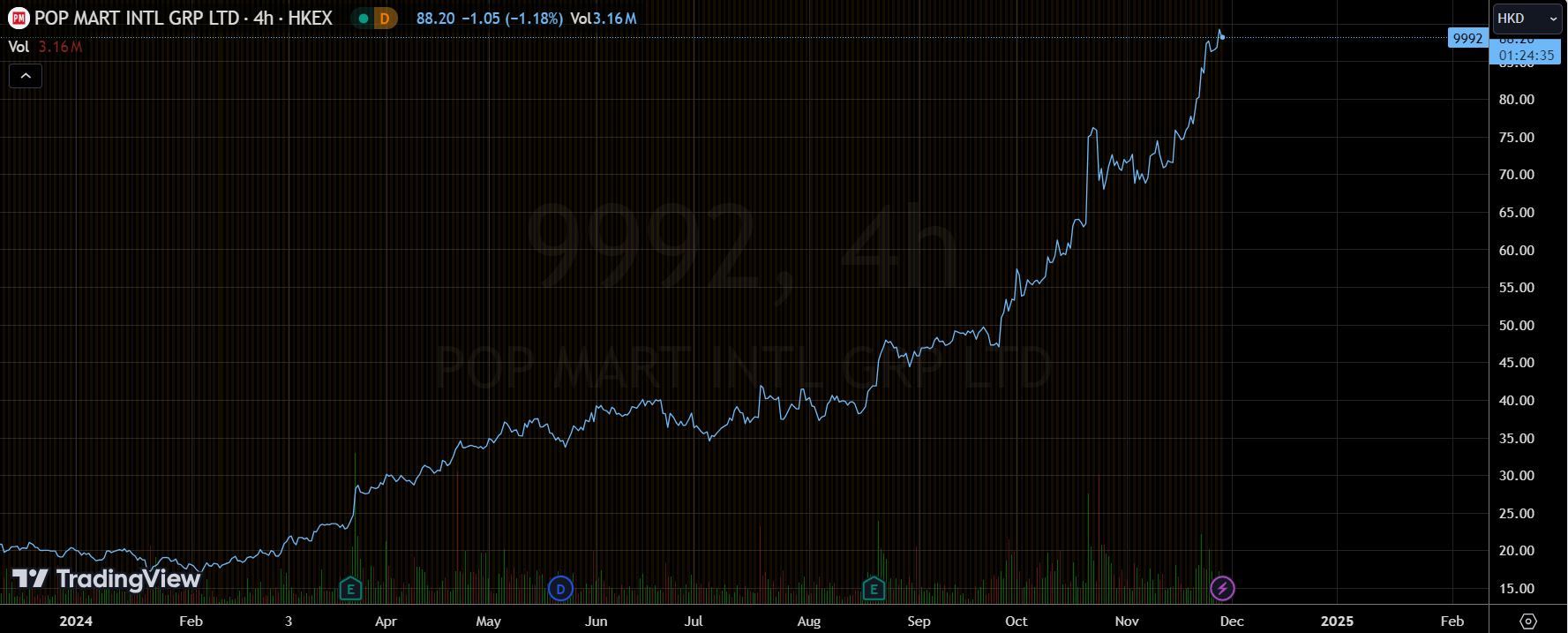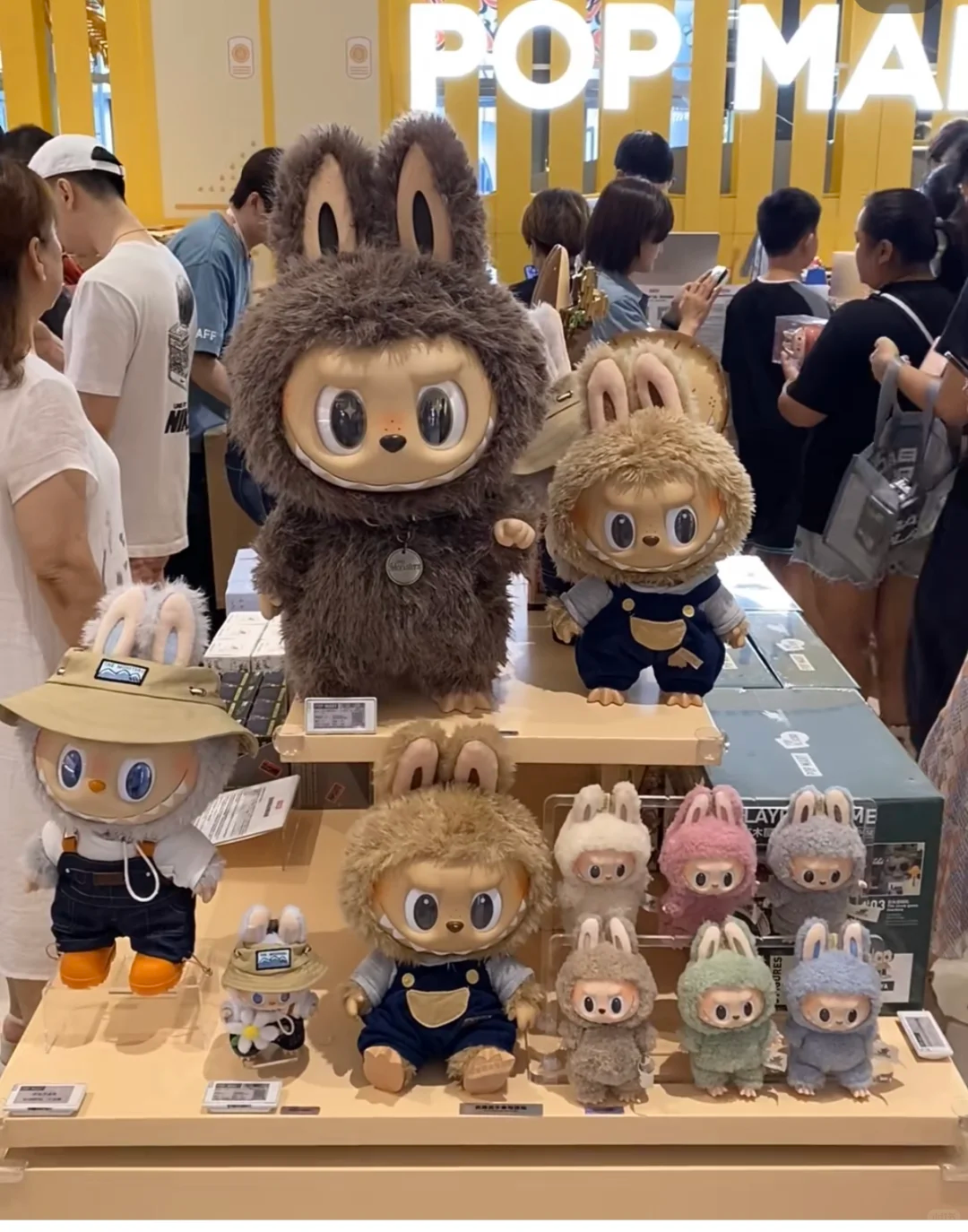"谷子" is the phonetic translation of "goods", which in the context of animation mainly refers to a variety of animation-derived commodities, and "Guzi economy" is an economic model formed by the production, sale and consumption of animation-derived commodities.The "Goods Economy" is an economic model formed by the production, sale and consumption of animation-derived commodities.Now the domestic speculation of the "grain economy", there is a leading Hong Kong stocks have risen 338%!
Japan's "Goods Economy" development background and market performance
Economic environment: After the 1990s, Japan's economic growth stagnated, social problems were highlighted, and the focus of life of the "block generation" and the "awakening generation" shifted to leisure and entertainment, and anime, as a representative of spiritual consumption, saw an increase in related expenditures, providing a ground for the development of the "Goods Economy".When the economy is going down, the consumption of animation is going up, which provides the soil for the development of "Goods Economy".
Industry structure: Japan's animation industry is based on comic IP as the core, animation to expand the audience, commercialization to stimulate downstream derivatives consumption, the industry value chain is spindle-shaped distribution, downstream derivatives consumption is the center of gravity of value, this industrial structure promotes the rise and development of the "Valley Economy", which makes the animation derivatives commodity marketThis industrial structure promotes the rise and development of "Goods economy", which makes the animation derivative merchandise market expand continuously.
Market size and growth rate: Among the segmented tracks, the merchandising market size reaches 669.3 billion yen, the manga market size is 690.7 billion yen, etc., and the merchandising market size is large.In the past five years, the CAGR of categories such as collectible cards (24.9%), Twister (13.0%), and modeling hobbies (11.2%) has been relatively fast, and soft peripherals represented by "Tanuki" are rapidly emerging.
Operating margins: downstream merchandising operating margins of about 10% +, licensing is as high as 40% +, entertainment facilities for 5%, upstream publishing margins of 10% is more stable, the difference in profit margins in different segments reflects the profitability characteristics of the "Goods economy" in various fields.Related companies include$sony
Key Factors in the Development of Japan's "Goods Economy"
IP operation: prolonging the life cycle of IPs by attracting new audiences through serialization, expanding sales scale and maintaining IP exposure through commercialization, and slowing down the loss of fans through socialization, etc. The successful operation of headline IPs such as Pokémon has provided strong brand support for related derivatives, thus promoting the development of the "Goods Economy"."Commodity development
Commodity development: Bandai Namco, for example, has advantages in IP breadth and depth, and commodity development has barriers to produce differentiated products; Sanrio penetrates into all aspects of consumers' lives through a large number of IP marketing and licensing, and improves profit margins with a light licensing model, and the success of the enterprise in commodity development and marketing strategies has promoted the "Goods EconomyChina's "grain economy" is booming.
China's "Goods Economy" Potential
Market potential: China's economic development has provided the foundation to support the growth of spiritual consumption, and Generation Z's entry into society has brought momentum, but there is a gap between the proportion of education and entertainment spending and that of Japan in 2010, and there is room to increase the audience and per capita consumption of IP-based spiritual consumption, which is expected to usher in opportunities for development of the "Valley Economy.The "Valley Economy" is expected to usher in development opportunities.
Rise of IP to promote derivative consumption: Under optimistic assumptions (increase in penetration rate of pan-secondary audience, growth in per capita GDP, etc.), the market size of collectible cards, soft peripherals, trendy games, scene consumption, etc. derived from China's IP is expected to grow dramatically, e.g., collectible cards may reach RMB 39.5 billion and soft peripherals may reach RMB 173.1 billion.
Traditional culture to lead the national wind boom: cultural creation, hanbok market size in 2023 has reached 115.6 billion yuan and 14.5 billion yuan, with the strengthening of the cultural confidence of residents and hanbok daily scene penetration, etc., the relevant industry is expected to develop at a high rate, which will lead to the "Goods economy" in the field of the expansion of the national wind!The company, such as related raw materials, manufacturing, branding, etc. will benefit from the "grain economy" in the development of the cultural industry in the national wind.
Major companies: PopMart
Significant revenue growth: the 2024 interim report showed that Bubble Mart's revenue was 4.558 billion, up 61.98% year-on-year; in the third quarter of 2024, overall revenue grew 120%-125% year-on-year, of which the year-on-year growth of Hong Kong, Macao, Taiwan and overseas revenues amounted to 440%-445%, with strong growth and a rate of growth far exceeding that of the previous years, indicating the company's business isThe company's business is in a stage of rapid expansion
Substantial increase in net profit: 2024 interim net profit of 921 million yuan, up 93.32% year-on-year, showing significant enhancement of the company's profitability, good operating efficiency, cost control and operational efficiency and other aspects of better performance.
The business segment has many highlights:
Strong IP operation capability: Bubble Mart owns a number of famous IPs, such as Labubu, Molly, the Monsters, Pucky and so on.
The retail business was split for the first time in the first half of 2024 according to the four major segments of hand puppet, mega, plush toys, derivatives and others, in which the plush category grew by 994% and became a phenomenal pop-up product, and the block category was successfully launched, and the ip extension ability was significantly improved;
Since the opening of overseas layout in 2018, it has owned more than 500 offline stores and more than 2,300 robot stores in more than 30 countries and regions around the world, with revenue from Hong Kong, Macao, Taiwan and overseas increasing by 440%-445% year-on-year in Q3
Challenges
Market Competition: With the development of the "Goods Economy", market competition may intensify, and it is a challenge for enterprises to stand out among the numerous animation derivative products.Whether in terms of product innovation, quality control or brand marketing, it is necessary to continuously improve competitiveness.In addition, due to the manufacturing industry's involution, homogenization and competition for substitutes of related brands will become extremely fierce.
IP life cycle management: It is not easy to maintain the long-term attraction of IP, and it is necessary to continue to invest resources in innovation and operation, so as to avoid a decline in the sales of related "Goods " merchandise due to the fading of IP fever.
Changes in Consumer Demand: Consumer preferences and demand for anime-derived merchandise may change over time and in response to cultural trends, etc., and companies need to be sensitive to these changes in order to adjust their merchandise strategies in a timely manner.
Legal disputes over IP: Japan attaches great importance to the protection of intellectual property rights, and consumers have a strong awareness of licensing and payment.Considering the much lower cost of domestic production and the mixed quality of different manufacturers, there is a possibility of an onslaught of pirated products.
Future Development
Technological innovation and integration: With the development of science and technology, technologies such as augmented reality (AR) and virtual reality (VR) may be integrated into "cereal" commodities to bring consumers a richer experience, such as the launch of anime cards or models with AR interactive functions.
Cross-field cooperation: The "Goods Economy" may engage in cross-border cooperation with more fields, such as combining with film and television, catering, tourism and other industries to develop more diversified products and consumption scenes, such as restaurants and tourism routes themed on popular animation IPs, in order to further expand the market space.


Comments